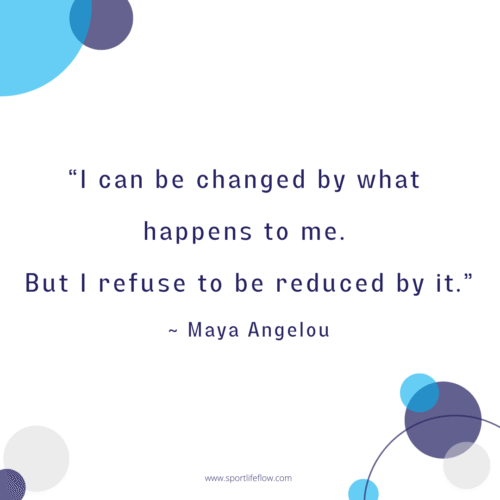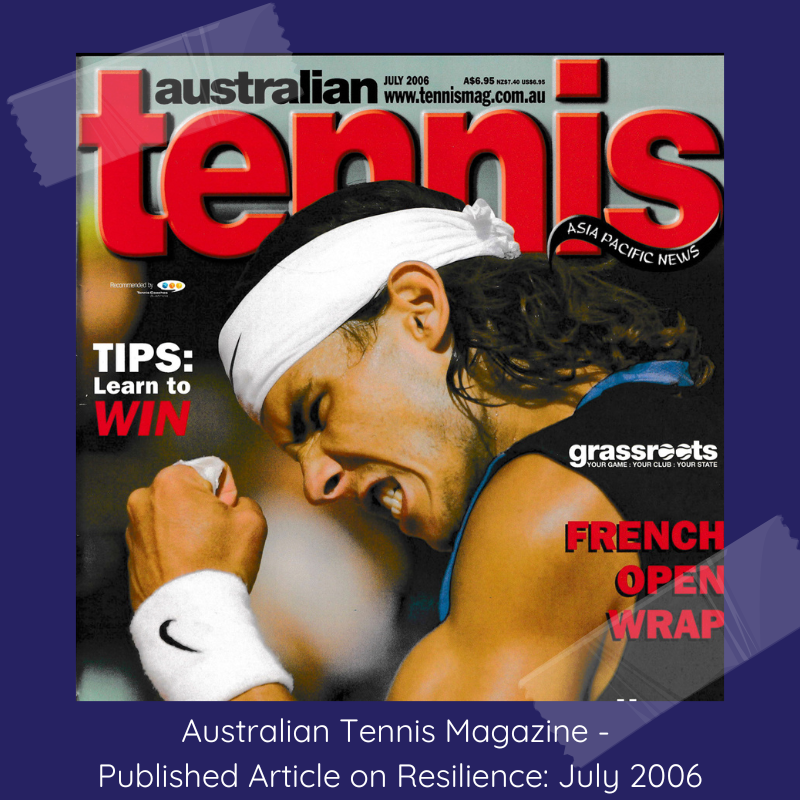In this post I am going to share what resilience is, why it is important within sport and 7 ways a coach can help enhance resilience in young athletes.
What is Resilience?
Resilience has been a concept that continues to grow and evolve over the years. Within the dictionary, some definitions of resilience include –
“ability to recover readily from illness, depression, adversity, or thelike; buoyancy.” ~ Dictionary.com“
the capacity to recover quickly from difficulties; toughness.” ~ Google and Oxford Dictionaries
“Resilience is the process of adapting well in the face of adversity, trauma, tragedy, threats, or even significant sources of stress – such as family and relationship problems, serious health problems, or workplace and financial stressors. It means “bouncing back” from difficult experiences.” ~ PsychCentral
What Does the Research Say About Resilience?
Within the research, resilience continues to prove popular and some –
- “(Resilience is) the universal capacity which allows a person, group or community to prevent, minimize or overcome damaging effects of adversity” ~ Grotberg, 1995, p.6),
- “…personal resilience strengths are the individual characteristics associated with healthy development and life success” ~ Benard, 2004, p.13,“Resilience refers to the process of overcoming the negative effects of risk exposure, coping successfully with traumatic experiences, and avoiding the negative trajectories associated with risks” ~ Fergus & Zimmerman, 2005, p.399, and
- “the capacity of individuals to navigate their physical and social ecologies to provide resources, as well as their access to families and communities who can culturally navigate for them” ~ Ungar, Brown, Liebenberg, Cheung, & Levine, 2008, p.168.
Resilience is a skill that is essential for all young people to develop. According to Benard (2004) –
…personal resilience strengths are the individual characteristics associated with healthy development and life success. (p.13).
These personal strengths do not cause resilience, but are the positive developmental outcomes that demonstrate that these innate individual characteristics are engaged (Benard, 2004). The four categories of personal resilience strengths are:
- social competence (communication skills; being responsive to others; having empathy and caring for others; forgiveness and compassion);
- problem-solving (planning; flexibility; help-seeking; critical and creative thinking);
- autonomy (a secure sense of identity; self-worth; initiative; ability to cope; sense of humour); and
- sense of purpose (hope for future; personal goals and values; sense of faith; connectedness with others) – (Benard, 2004).
To develop these innate personal strengths and produce good developmental outcomes, young people need to be in a nurturing environment. Some of the environments the young people are involved in include schools, families, and communities (including sporting clubs). A nurturing environment is one where the young person experiences caring relationships; high but achievable expectations; and authentic opportunities to participate and contribute (Benard, 2004).
7 Ways a Coach Can Enhance Resilience in Young Athletes
One of the people, apart from family, friends and peers who can impact upon and play a very important role in the athlete’s environment is their coach. So what can a coach do to support the social and emotional wellbeing needs of their athletes and develop a player’s innate personal strengths? Some strategies may include:
1. Develop and implement processes and practices to encourage connectedness –
For example – if a player is traveling away to a tournament, identify some people they may be able to practice with or if they are traveling overseas give them some trusted contacts in the area they are going);
2. Express and model empathy –
For example – if an athlete is talking to you about an experience, listen to the athlete and try to understand and share your athlete’s feelings.
3. Plan goals with the athlete –
For example – sit down with the athlete and talk through their goals and identify if they are realistic in the timeframe available.
4. Work on personal relationships as well as relationships between young people and parents or external support agencies –
For example – identify a team of people (fitness trainer, coach, sports psychologist, parent, school teacher) who can help the athlete achieve their goals and model effective communication skills;
5. Provide young people with multiple opportunities and contexts in which to experience feelings of competence and/or develop competencies.
For example – give constructive feedback and realistic praise to the athlete;
6. Establish processes, practices and relationships that enhance self-worth and promote positive coping strategies for real life situations.
For example – suggesting the athlete keep a diary/journal to reflect on their thoughts and feelings and help them identify strategies to cope with these feelings;
7. Enhance opportunities for the athlete to make real-life decisions and have a say in their training and tournament schedules.
For example – allow the athlete to lead a training session.
Over to You…
I hope this has given you (the coach) some insight in to how to enhance resilience for your athletes. It is my hope, that the sporting community can work together to develop the innate personal strengths of young athletes and contribute to the development of well-adjusted human beings and not just good athletes.
If you liked this article and want to keep taking the next step towards freedom and thriving in your sport and life, please feel free to join the Sport Life Flow community by clicking here.
Reference –
Benard, B. (2004). Resiliency – What Have We Learned. San Francisco, CA: WestEd.
Grotberg. (1995). A Guide to Promoting Resilience in Children: Strengthening the Human Spirit. Early Childhood Development: Practice and Relections Retrieved from https://resilnet.uiuc.edu/library/grotb95b.html
Extra Note –
P.S. I originally wrote this article for Tennis Australia when I was completing the High Performance Coaching Course. It was published in the Tennis Magazine in July 2006. A HUGE thank you to Ian McGregor who found the original article for me – I am so grateful as I know in my heart this is my purpose, it has just taken me a while to heal and get clarity about my own adventure around tennis. I originally named the article – Enhancing Resilience in Young People, however you can see below, that was changed and no I am not a fan of “toughening up.”
Also – a shout out to Tracy Zilm whom was my manager at the time I wrote this article and edited it for me. Thanks heaps Tracy!


